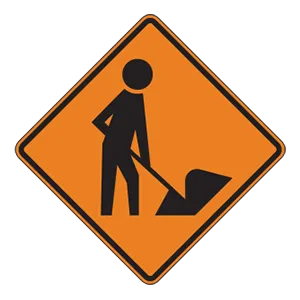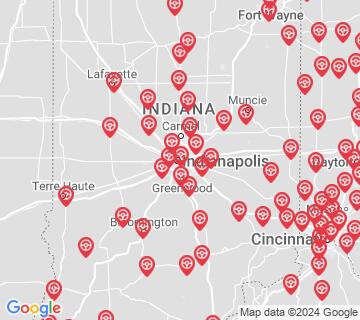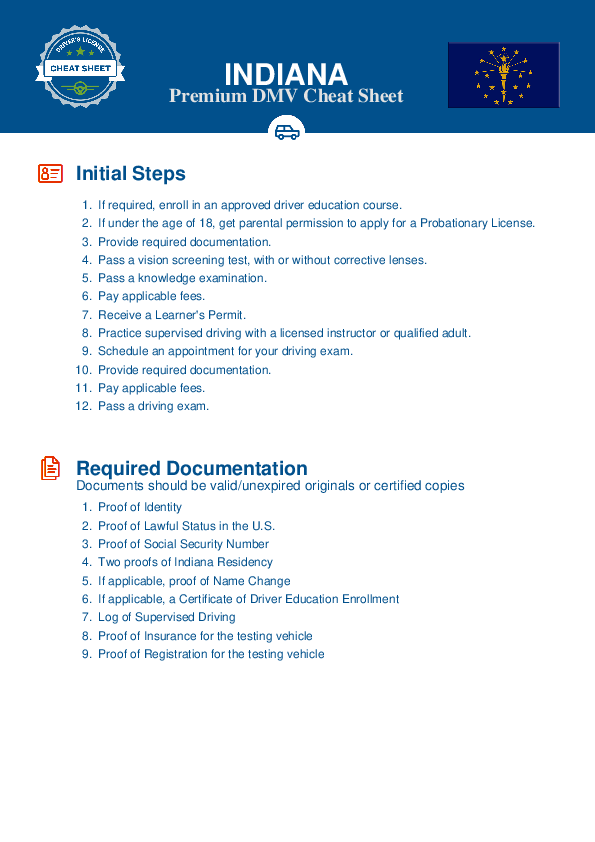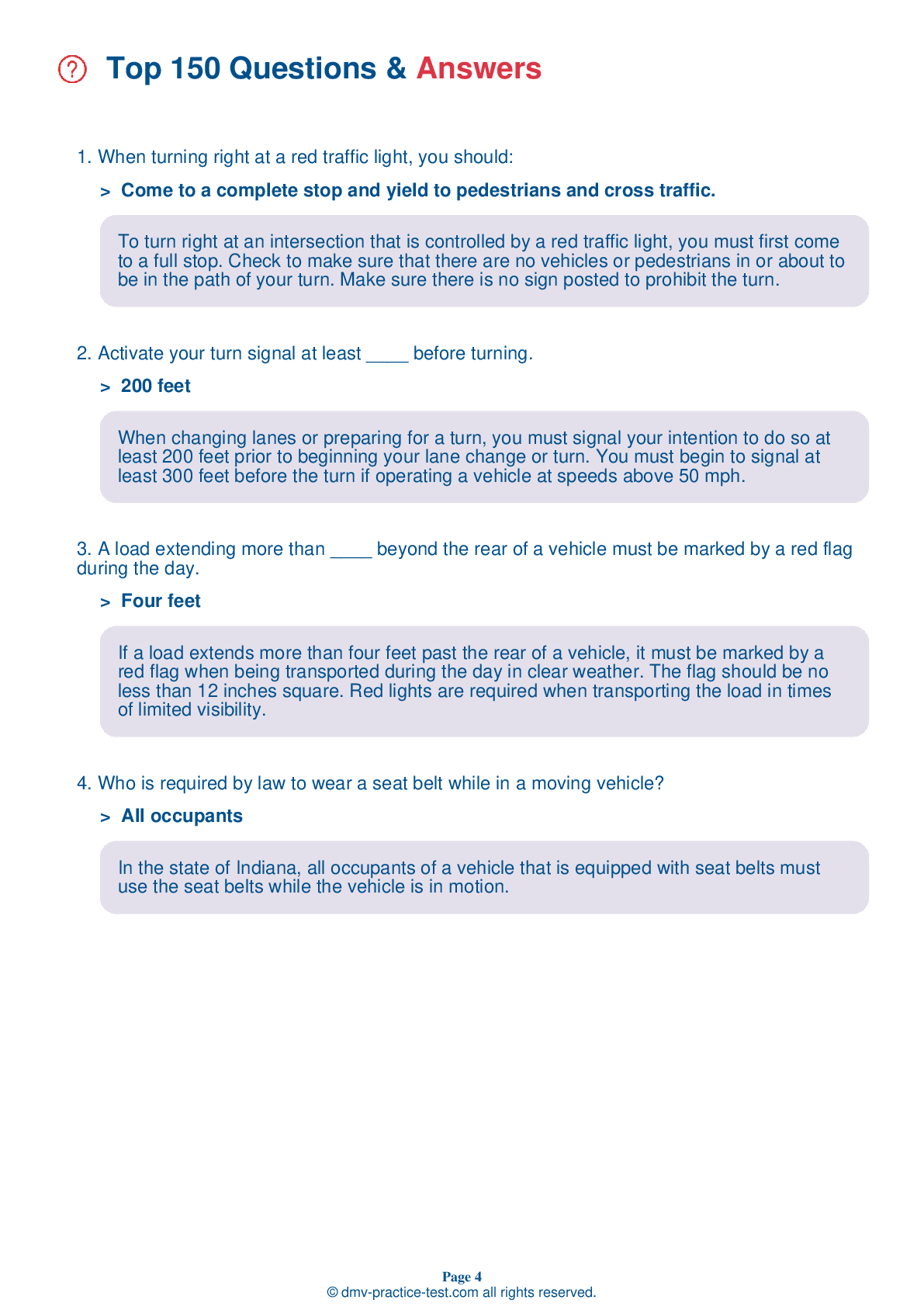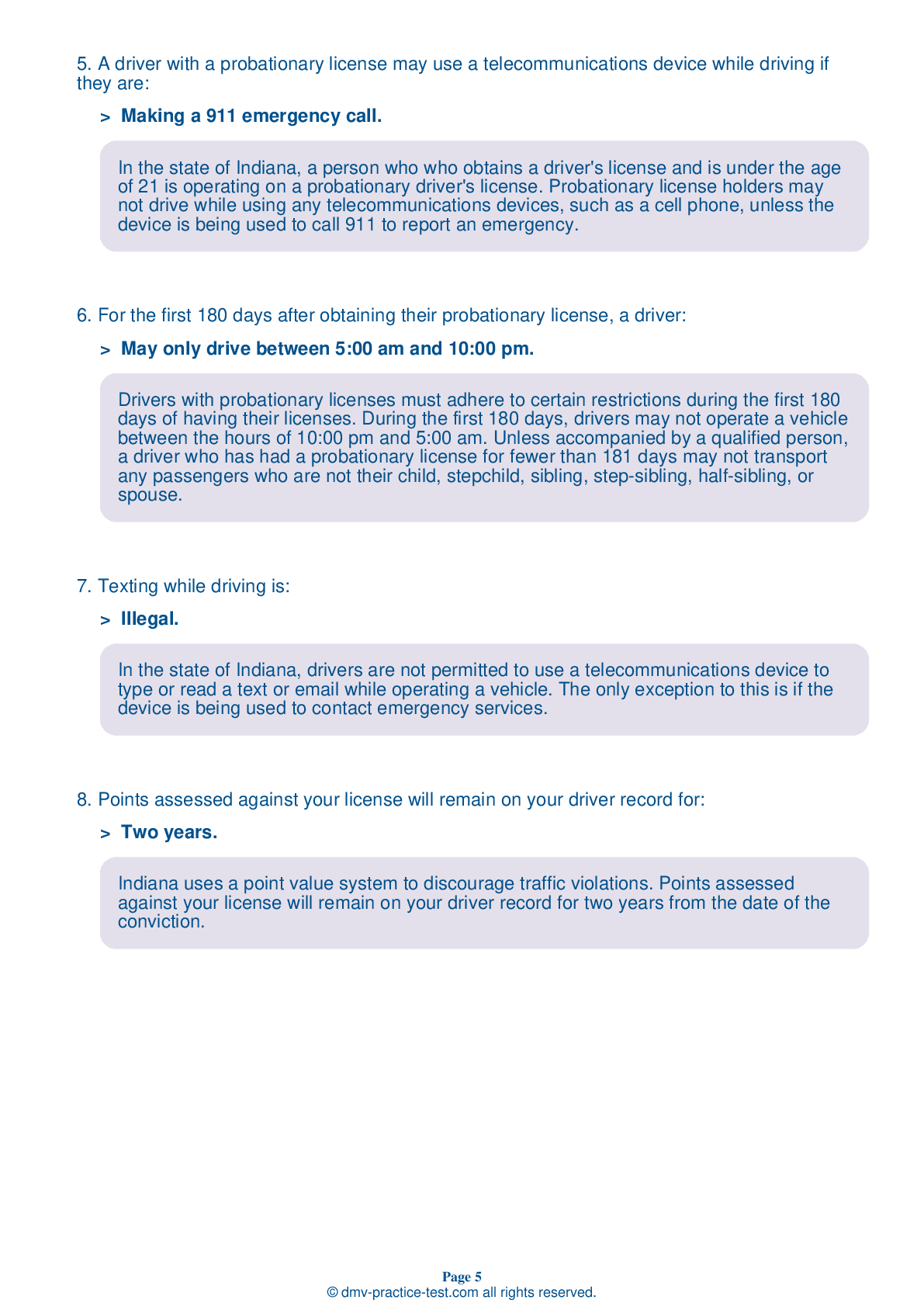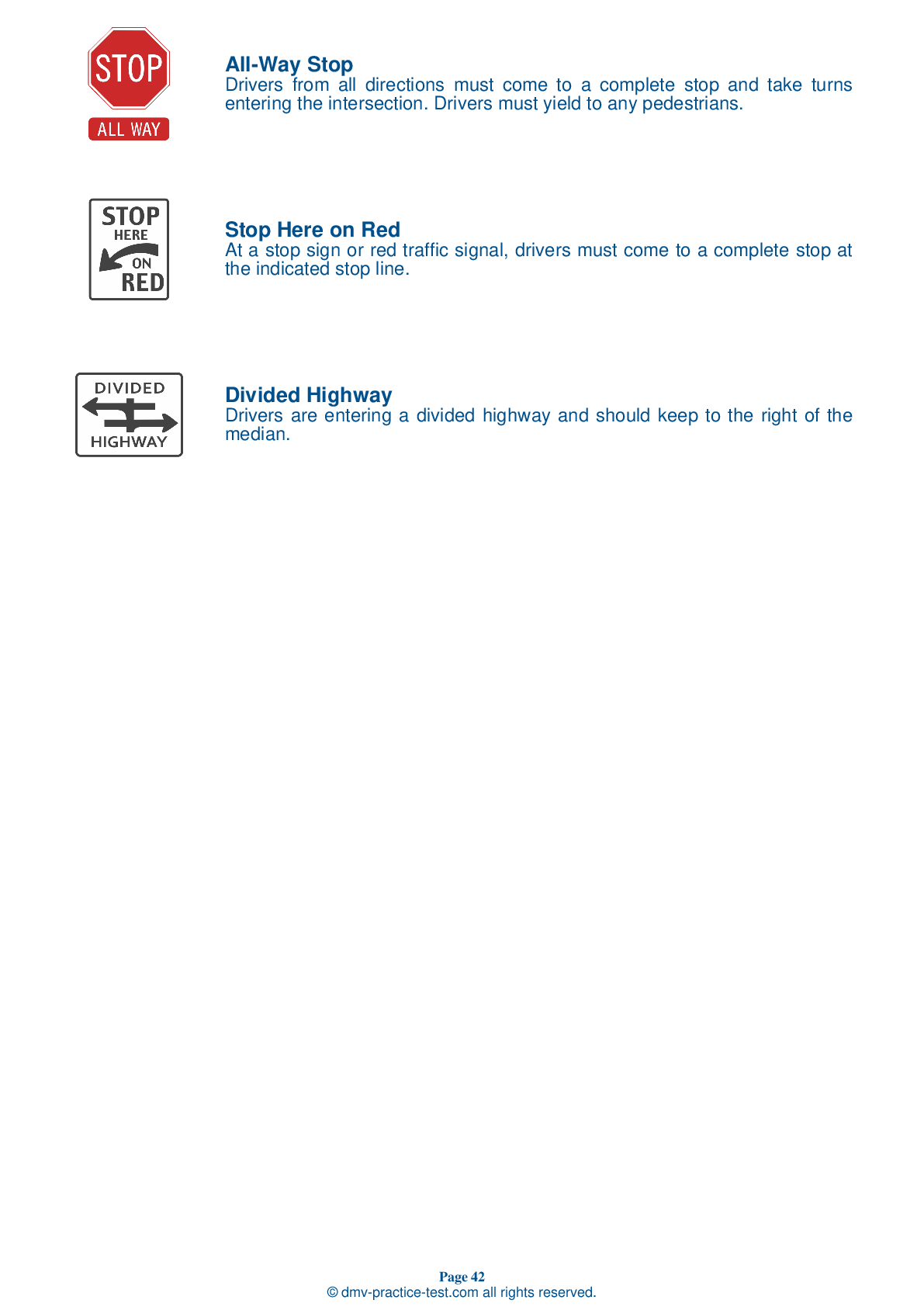FREE Indiana DMV Practice Test #20 Page 3 of 5
This set of Indiana DMV practise tests has been updated for January 2025. It includes questions based on the Indiana Driver Handbook's most significant traffic signals and laws for 2025. Use actual questions that are very similar (often identical!) to the DMV driving permit test and driver's licence exam to study for the DMV driving permit test and driver's licence exam.
On the practise exam, each question gets a tip and explanation to help you remember the concepts. The written component of the official Indiana DMV test will include questions about traffic rules, traffic signs, and driving statutes, as well as information from the Driver Handbook.
To obtain a passing grade, you must correctly answer 44 of the 50 questions. Take our DMV practise exam to help you prepare for your Indiana instruction permit or driver's licence.
The DMV exam is available in several languages.
Using any kind of testing assistance will result in an automatic fail, and the DMV may take additional action against your driver's licence, so stay away from it.
17 . If your car breaks down on a highway, you should:
If your vehicle breaks down on the highway, you should signal before carefully exiting the roadway and turning on your hazard flashers. Get as far off the road as possible and park in a location where other drivers can easily see you. Lift your hood to let other drivers know your vehicle is disabled.
18 . An arrow painted on the pavement means:
An arrow painted on the pavement within a traffic lane indicates that drivers in the lane must make the movement indicated by the arrow. Drivers should follow directions given by any traffic signs or signals before proceeding in the direction indicated by the arrow.
19 . When driving on slick roads, you should:
While it is always dangerous to drive too fast on slippery roads, this is especially true when driving in turns and curves. Be sure to approach them more slowly in slippery conditions than you would under normal circumstances.
20 . This sign means:
